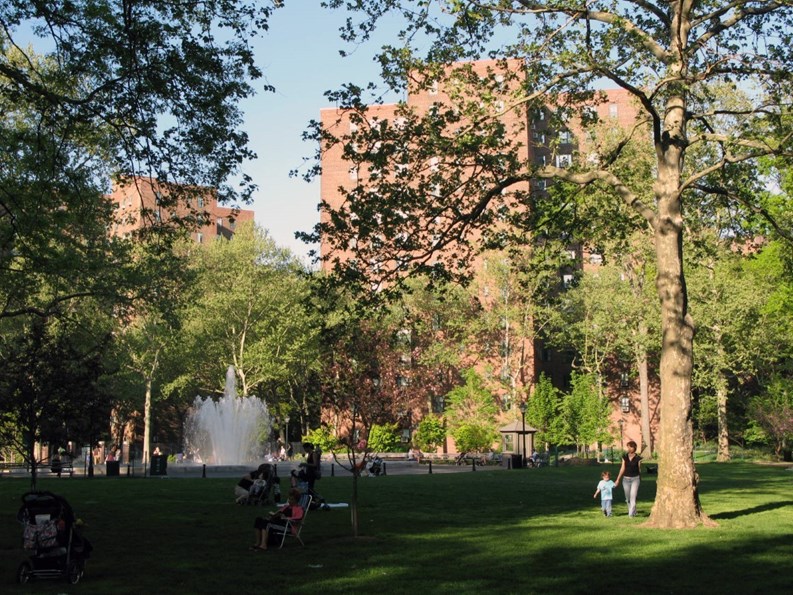As the old saying goes, you never get a second chance to make a first impression, and for co-op and condo homebuyers, that first impression is almost always the view from the street. No matter how deluxe the accommodations inside, if the property’s exterior is less than desirable, a buyer’s mind is often made up before they enter the front door—if they even bother to go that far.
Especially in times of economic stress, housing associations and residents are compelled to maximize the curb appeal of their property in order to compete in a market that still has a long road to recovery ahead. While this need not cost thousands of dollars, it's a little more complex than just planting some geraniums and calling it a day. How your building or association presents itself to passers-by and the world at large—it's curb appeal—has a direct effect on resident morale, pride of ownership, and even property values. Let's take a look at how to spruce up your property without paying through the nose.
Judging a Book by Its Cover
What someone sees on the exterior almost inevitably leads them to make assumptions on the state of the building inside. While a balcony and hardwood floors may have attracted a prospective buyer to an apartment, the facade and front door of the building itself may turn them away. If the awning is faded and tattered, and the outdoor planters are strewn with cigarette butts, they may rightfully question the condition of the apartment they are thinking about purchasing as well as the attitude of the board and property management team as a whole.
“Curb appeal is no different than when you go into a job interview,” says Howard Freilich, president and CEO of Blondie's Treehouse, a landscape design company headquartered in Mamononeck with offices in Manhattan. “When you walk in and you're competing with lots of people for a job, the first impression is a very lasting one. Same thing with curb appeal, there is no redo or second shots. Someone will look out the cab and say, 'I like it or I don't like it.' Because there is so much inventory and competition in the city, you get one look—so make it a good one.”
“Curb appeal absolutely sets the tone for the entire building image,” says Marilyn Sygrove, president of Sygrove Associates Design Group Inc. in Manhattan. “Number one, how well the building is maintained, how current the materials and design are, and it gives you a sense of quality of the building. If you are in the competitive real estate market and your snow is shoveled, the door hardware is shiny and the glass is clean...that is the image that you want to project in a well-run, well-maintained building.”
Image is Everything
In order to convey the image of a successfully managed and desirable building, Sygrove suggests attending to all aspects of the exterior. She explains that curb appeal encompasses many aspects of the building.
“Curb appeal is the facade of the building at eye level,” she says, “from the condition of the sidewalk, the awning, any plantings or landscaping and entry doors, plus whatever you can visually see into the building—for instance if there is a large window that looks into the lobby.”
Amid the things to consider when putting a home up for sale, there are a few professional designers and home stagers feel are important. Many are common sense issues that people often overlook when preparing a property to be shown.
“You have to have to look at your home from the outside with a fresh eye,” says Sandra Holmes, owner of Florida-based Home Staging Concepts, and a member of the International Association of Home Staging Professionals. “For example, if you can’t see your property, you can’t sell it. If you're in a more suburban area, the grass needs to be cut, the lawn should be green and free of weeds, there should be fresh flowers, and the edges need to be trimmed and mulched.”
The exterior facade is another biggie—especially in densely-built neighborhoods in Manhattan and Brooklyn. “The glass should always be clean, the hardware should always be polished, the awning should be washed, and if you have bulbs and sconces, they should match each other,” says Sygrove. “Lack of those little things suggests mismanagement.”
Flowers, plants and trees can also enhance a property, but they shouldn't look like a jungle. “In regards to a landscaping look, it needs to be neat and trimmed,” says Freilich. “Usually if there is some splash of color and it is being professionally maintained, it makes a nice entrance to a property.”
Sygrove agrees, and says that adding seasonal plants—such as poinsettias in the winter or geraniums in the summer—can make the difference between a striking front entryway and a bland one.
Rules & Regulations
In some communities, guidelines and regulations for upkeep can be quite strict. Before making any changes to their unit, residents should consult the building or association's bylaws and rules. For some, the choices can be severely limited. In fact, in some buildings, the association board can tell you what colors you can choose from for front doors, trim, even welcome mats, says Holmes.
While strict rules often don't leave much room for much personalization, Sygrove believes the board should have and enforce rules on décor, especially in communal areas such as lobbies and hallways, which are not intended to be personal—especially in larger buildings. She notes that there may however, be an exception with smaller buildings. “In smaller, prewar buildings where there are two or three residents per floor, they can get together and decide on a theme for their floor.”
In many co-ops and condos, the board or management itself will take care of the exterior maintenance for the entire site. The monthly dues are in part spent on upkeep and many of these points will need to be addressed by the board or landscaping committee.
Low-Cost, High-Impact Solutions
Enhancing your curb appeal doesn’t have to be an expensive task. There are several things that associations can do to help boost that first impression and encourage sales—many of which have the added bonus of improving the property for the residents who are staying.
“You don't have to have as many elements, just as long as what you have looks good and is presentable,” says Freilich. “In the old days, you may have had six big silver planters with many flowers, and everything was just full and overstocked, that was one look. Right now, if you have two attractive, understated containers with nice plants, it will give you the same appeal and lower your budget costs by two-thirds.”
Minor changes can certainly produce major results. “Fresh paint is a good low-cost, high-impact solution,” says Holmes, “and cleaning up your frontage will always make a big impact. That costs very little. Some landscape solutions come down to a simple adage: Trimming up and trimming down.”
It’s All About Perspective
There’s no accounting for taste, and unfortunately, nowhere is this adage truer than when viewing a home. Part of a building or apartment stager’s main objective is to help the seller understand that the property needs to become a commodity more than an heirloom—that is, the perspective needs to shift from seller to buyer.
“They have to understand that is no longer their home and have to skew it toward the buyer’s perspective,” says Holmes. “It becomes less a home and more a product when you are putting it up for sale.”
Inside the unit, personal articles are hidden in favor of more general suggestions that imply a room’s use. For example, while your collection of ceramic teddy bears in the bathroom may be cute and quirky, an apartment stager will likely suggest you put them into hibernation until your unit is sold and you're settled into your new place.
Use Available Resources
While enhancing your curb appeal or updating the look of your condo or co-op may seem overwhelming, you don't need a design degree to get started. In fact, you don't even need to go further than down the block. Checking out what other buildings in your neighborhood have done to spruce up and present themselves can inspire your own board or committee.
“Gathering that information is very helpful,” says Sygrove. She recommends taking photographs of elements of other buildings that are the same vintage as yours in the neighborhood. These can be small details such as the style of the doors, the detail of the sconces or the color palette of the landscaping. A scrapbook can then be assembled to show to the board or a designer, who can use the suggestions to formulate a unique design plan for your community.
Freilich also suggests shopping around to see what different designers and contractors can offer for your property. “I would invite two or three contractors to come in and give you presentations on what they can do for you and the board,” he says.
With a few extra details and small, inexpensive changes, a residence can be transformed from banal to bold without breaking the bank and make that first impression a success.
Denton Tarver is a professional landscape architect and freelance writer living in New York City.







Leave a Comment